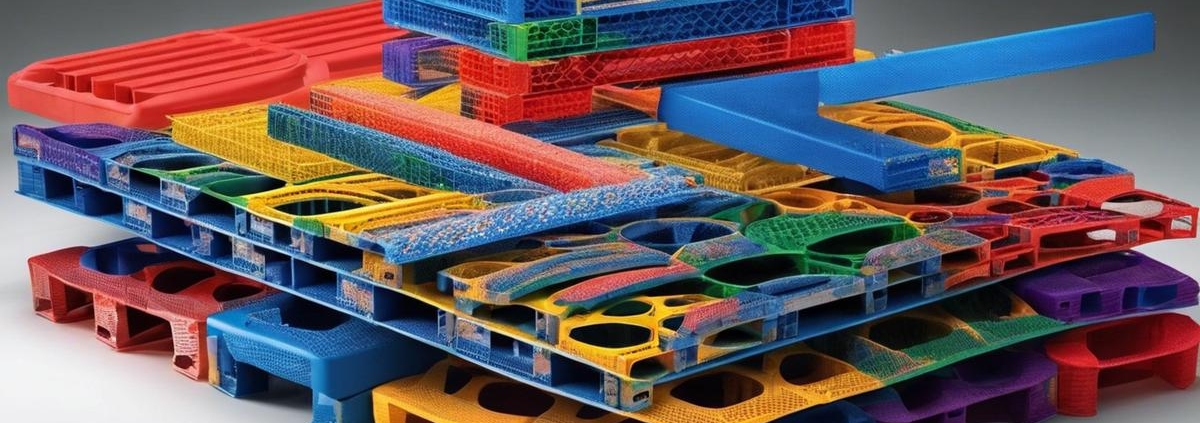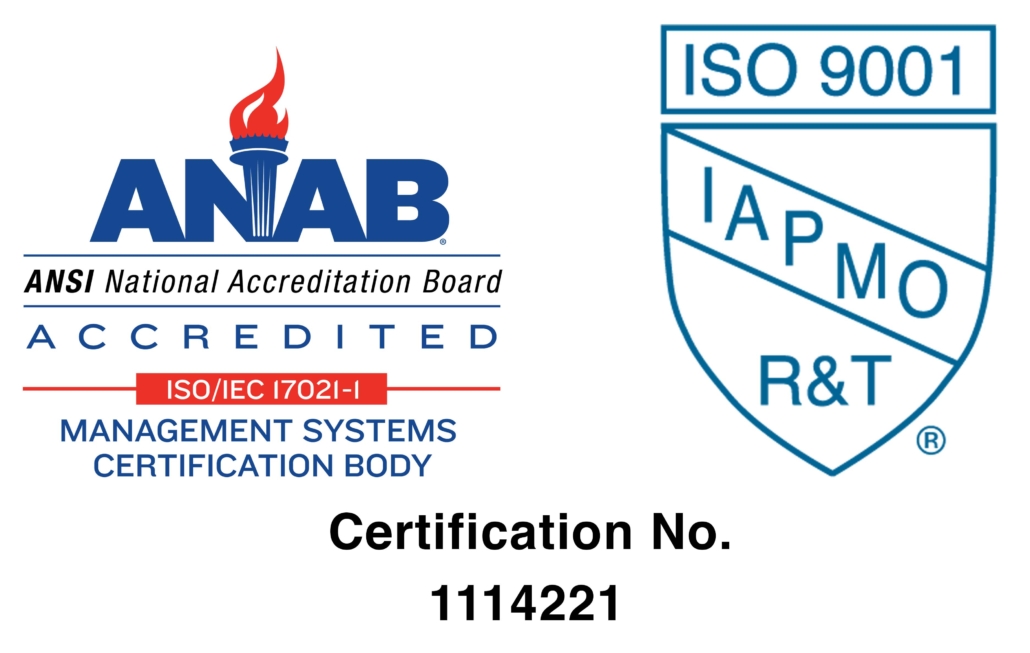The ubiquitous plastic pallet, a mainstay in shipping and warehouse operations across the globe, has become a silent yet formidable contributor to the world’s mounting plastic waste dilemma. With an intricate design that often comprises a mix of polymers and embedded materials like fiberglass or metal, these pallets represent a complex challenge for recycling initiatives. This essay endeavors to unravel the layers of difficulties faced in the quest to recycle plastic pallets efficiently. From the hidden intricacies within their robust frames, the barriers imposed by advanced sorting technologies, to the perplexing issues of contamination, we will venture deep into the world of palletized plastic recycling. Furthermore, by dissecting the economic intricacies and environmental considerations, alongside a detailed look at revolutionary recycling methods, we shed light on the critical yet convoluted path toward sustainable plastic pallet management.
Complexities of Plastic Pallet Composition
The Intricacies of Recycling Plastic Pallets: A Complex Conundrum
Abstract:
The recycling of plastic pallets presents a multifaceted challenge owing to the composite nature of their materials, subjection to contaminants, and the heterogeneity of resin types employed in their construction. This composition contributes to the difficulties faced in the recycling process, thereby impelling a more profound analysis and innovative approaches to enhance efficiency and environmental sustainability.
Introduction:
In recent decades, the use of plastic pallets in the transportation and storage of goods has significantly risen, attributed to their durability, lightweight nature, and resistance to decay. While these features offer considerable benefits in logistics and supply chain management, they collectively render the end-of-life processing of these commodities a rather complex undertaking.
Composition and Polymer Diversity:
Plastic pallets are typically manufactured using a range of polymers, including high-density polyethylene (HDPE), polypropylene (PP), and occasionally, advanced composite materials that imbue additional strength. However, it is this very diversity in resins that proves to be a detriment to straightforward recycling. Polymers must be sorted by type for effective reprocessing, lest the melt flow properties and ultimate mechanical attributes of the recycled material be compromised. Given that pallets may conglomerate multiple polymer types, the task of segregation becomes laborious and economically disfavoring.
Contamination and Cleaning:
The operational environment of plastic pallets exposes them to a plethora of contaminants including oils, chemicals, and food residues. Cleansing these materials to a requisite standard for recycling is an energy-intensive process, one that must balance the efficacy of pollutant removal against the preservation of the polymer integrity.
Wear and Degradation:
Extended use subjects plastic pallets to physical wear and UV-induced degradation, factors which can alter the molecular weight and stability of the polymers. Such degradation can influence the recyclability of the material, as the mechanical performance of the resultant recycled product is often attenuated. Thus, the longevity of plastic pallets, while economically favorable, paradoxically detracts from the recycling viability.
Lifecycle and Financial Considerations:
It must also be noted that the economic calculus of recycling plastic pallets is a critical aspect. The cost of collection, transportation, sorting, and reprocessing often eclipses the value of the resultant material. This economic imbalance disincentivizes recycling efforts and engenders a preference for the production of virgin materials.
Innovative Approaches:
Amid these challenges, it is propitious that research and technological innovation continue to refine recycling methodologies. Strategies such as advanced sorting techniques, improved compatibilizers for mixed polymers, and the development of more robust markets for recycled plastics serve as beacons of progress in this domain. The environmental imperative to minimize waste and preserve natural resources demands nothing less than a concerted and intelligent response to the complex recycling challenges posed by plastic pallets.
Conclusion:
The ubiquitous plastic pallet, while advantageous in a logistics context, presents a formidable puzzle in terms of recycling. The complexity inherent in their composition demands nuanced understanding and sophisticated solutions – a testament to the interplay between materials science, environmental stewardship, and economic pragmatism. The pursuit of improved recycling processes for these resilient fixtures of global trade is an essential endeavor in our collective quest for a sustainable future.
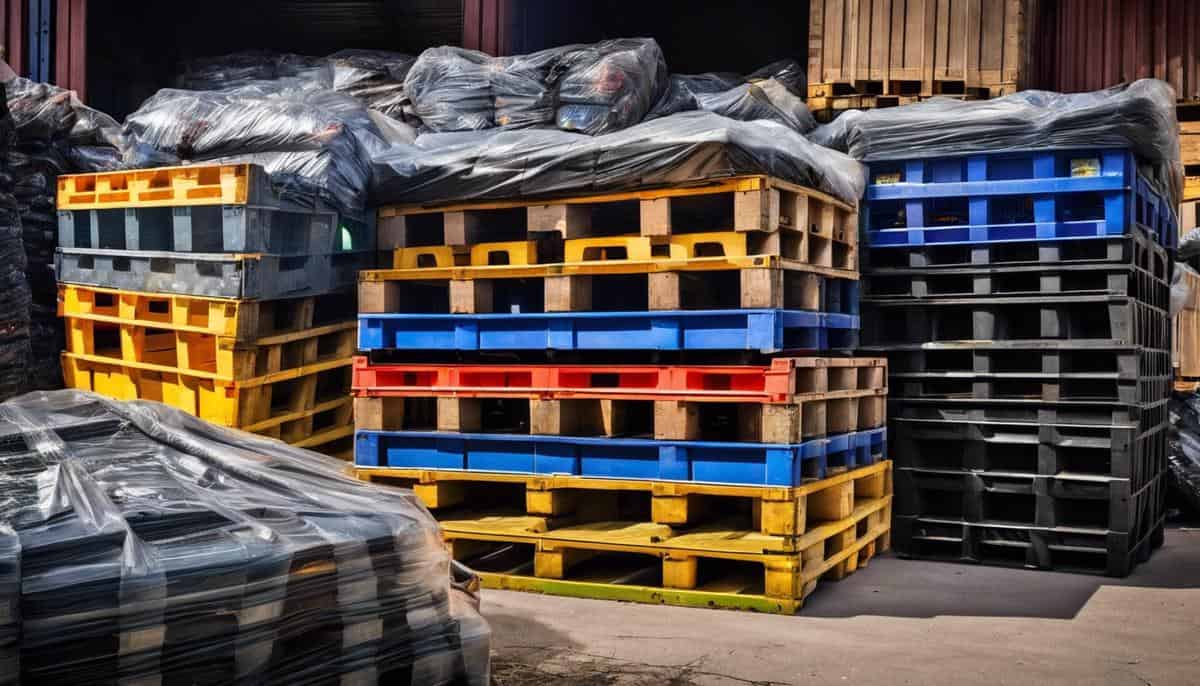
Sorting Technologies and Limitations
The Constraints of Sorting Technology in Enhancing Plastic Pallet Recycling Efficiency
The current epoch of recycling innovations confronts a formidable challenge with respect to the recycling of plastic pallets, directly related to the limitations innate in existing sorting technologies. As these contrivances command key stages in the recycling sequence, their efficacies profoundly influence the outcomes of the recycling process.
Advanced sorting technologies, such as Near-Infrared (NIR) spectroscopy, have become crucial in identifying and segregating diverse polymeric materials. Despite such advancements, inefficiencies remain inherent due to the non-uniformity of plastic pallet designs and the subtleties of their polymer compositions. The NIR spectrometry, while robust in many contexts, often struggles with black or heavily pigmented plastics, which absorb the infrared light and thwart precise identification.
Moreover, the advent of multi-layered or composite plastic pallets complicates matters further. The layers are often fused together, amalgamating dissimilar polymers, rendering them inseparable with extant sorting technologies. Consequently, these composite structures are doomed to a fate of downcycling or disposal in a landfill, a markedly untenable solution to the surmounting issue of plastic waste.
The sorting process is further impeded by the presence of ancillary materials. Metal fasteners and other non-plastic elements frequently enmeshed within these pallets elude proper classification and separation. This conundrum necessitates additional pre-sorting stages or manual disassembly, both of which introduce labor-intensive, time-consuming, and cost-inflating elements to the recycling value chain.
Furthermore, the capacity to swiftly and accurately sort at scale is another pain point. Existing technologies are calibrated for static, controlled conditions, yet the realities of waste stream dynamics present copious variations. The absence of a universally compatible, real-time sorting system across facilities amplifies the potential for inefficiency and contamination.
In the face of these tribulations, the search for solutions persists. Researchers are delving into the possibility of ‘design for recyclability,’ where the future of plastic pallet production envisions a standardized material usage that could obviate the need for complex, extensive sorting. Others investigate the augmentation of intelligent technologies, such as artificial intelligence (AI) and machine learning algorithms, to bolster the sorting processes’ precision and adaptability.
Despite these ventures, the prevailing technologies still impose limitations that significantly hamper the efficiency of plastic pallet recycling. Overcoming these hurdles necessitates a synthesis of industry-wide standards, innovative material design, and breakthroughs in sorting technologies. The imperative for holistic progress in this domain remains unequivocal, for it underpins the sustainability of an industry intricately entwined with global logistics and the custodianship of our environment.
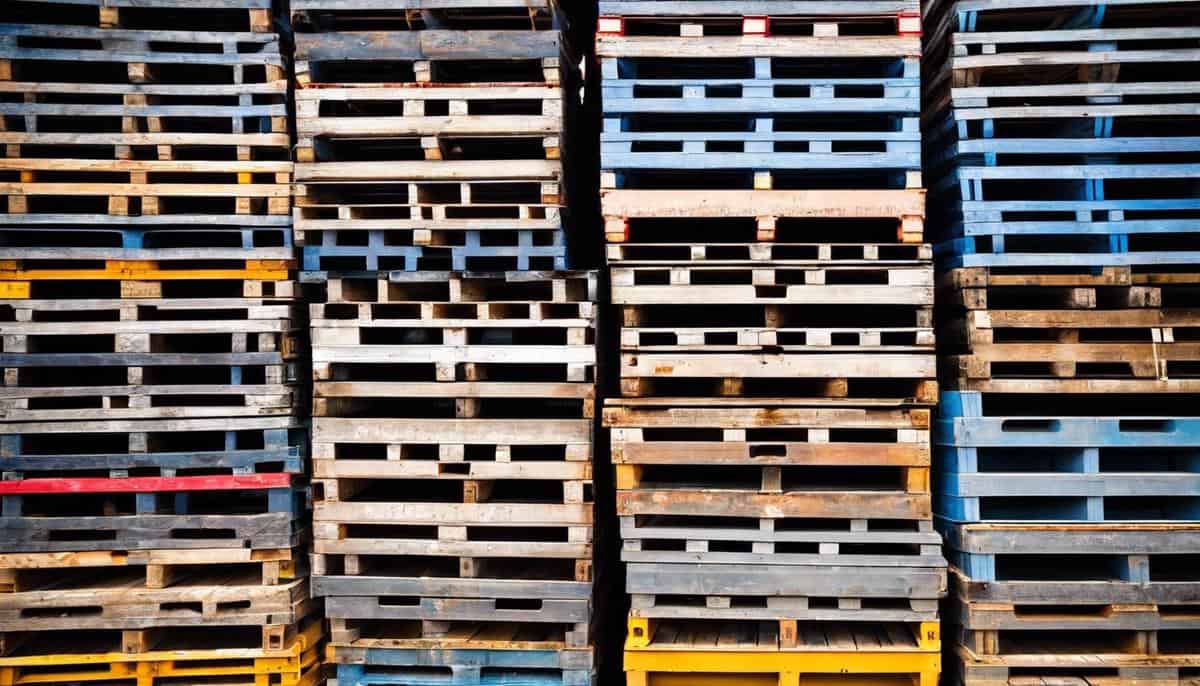
Contamination Issues in Palletized Plastic
The Effect of Contamination on the Recyclability of Palletized Plastics
Recyclability of plastic materials is an imperative aspect of environmental sustainability that has garnered significant attention across various industrial sectors. Palletized plastics, while essential for the logistics and material handling industry, present a distinct set of challenges in terms of contamination that profoundly impacts their end-of-life processing.
When discussing contamination, one must delineate between chemical and physical impurities that come into contact with plastic pallets throughout their usage. Chemical contaminants typically include various lubricants, solvents, and other industrial chemicals that can permeate the polymer matrix, thereby altering its inherent properties. This chemical integration may render the material unsuitable for conventional recycling processes, as the extrusion or re-molding of these chemically compromised plastics could result in compromised structural integrity or unpredictable material behaviors in subsequent usage.
Physical contamination, on the other hand, arises from the adhesion of foreign substances such as organic waste, dirt, and labels to the surface of the plastic. Such contaminants pose significant hurdles for the standard washing procedures employed prior to recycling. The inability to completely remove these substances without extensive, energy-intensive cleaning processes decreases the economic viability of recycling efforts. Moreover, adhesives from labels and tapes are particularly problematic, as they often require specialized solvents for removal, which in turn may produce additional waste streams requiring proper management.
The integration of plastic additives also influences contamination concerns. Additives such as flame retardants, plasticizers, and UV stabilizers are commonly found in plastic pallets to bolster their performance characteristics. However, these substances complicate recycling by necessitating separation and purification processes designed to ensure that the resulting recycled material complies with safety and performance criteria for newly manufactured goods.
Another prevalent issue relates to the contamination resulting from microbial growth. Pallets are frequently used in environments conducive to bacterial and fungal colonization, which not only presents health risks but also further aggravates the process of recycling. The remediation of such biological contamination often reinforces the need for aggressive cleaning methods, incorporating biocides or high-temperature treatments that could unfavorably alter the polymer structure.
This analysis would be incomplete without addressing the policy implications and logistical limitations inherent in the current recycling infrastructure. At present, regulatory frameworks are not sufficiently tailored to monitor and manage the aforementioned contamination issues, thereby leaving recyclers to contend with the variability and uncertainty of material quality. The corresponding financial and labor costs associated with this uncertainty can act as a deterrent to recycling initiatives.
It is essential for stakeholders to acknowledge and respond to these contamination issues as guiding factors for the reform of recycling practices. While some of these issues are being addressed through advances in automated sorting technologies and improvements in polymer design, the complexity and persistence of contamination indicates an ongoing need for innovation. The potential amalgamation of material science endeavors with alterations in supply chain practices and regulatory measures could progressively transform the recyclability of plastic pallets into a more manageable and environmentally harmonious process.
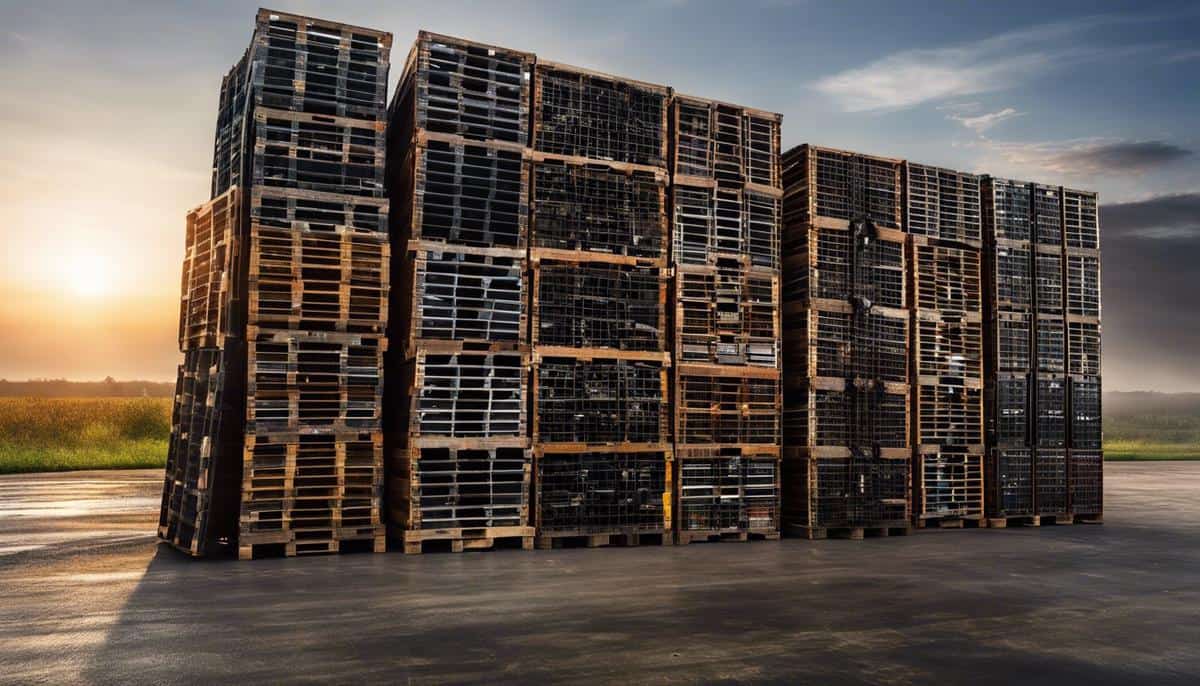
Economic Realities of Pallet Recycling
The Economic Nuances of Disassembling and Processing Palletized Plastic for Recycling
Within the realm of plastic recycling, the economic feasibility of repurposing plastic pallets is a multifaceted concern that extends well beyond mere technical challenges. While the focus often gravitates towards the technological hurdles of classification and purification, it is crucial to examine the fiscal implications inherent in the disassembly and reprocessing of these material carriers.
One significant economic challenge lies in the cost-benefit analysis of recycling versus manufacturing new pallets. Plastic pallets—despite their durability—eventually reach the end of their useful life. At this juncture, the decision between the recycling of a used pallet and the production of a new one emanates from a critical examination of associated costs. The assessment of labor, energy expenditure, and necessary equipment for disassembly and reprocessing must be counterweighed against the expense of fresh materials and the creation of a new pallet.
In addition, the adaptabilities of processing facilities play a paramount role in the economic deliberations concerning plastic pallet recycling. Given that many facilities are designed for handling predominantly single-stream, non-complex plastic items, the transition or retrofitting required to accommodate the heterogeneity of plastic pallets can entail substantial capital investment. Such investment would demand a defensible forecast of long-term economic returns—a foresight that is often obscured by the volatility in the demand for recycled plastics.
Moreover, the influence of market forces on recycled plastic commodities cannot be understated. The pricing instability of virgin versus recycled plastic resin is a pivotal determinant in the economic viability of plastic pallet recycling programs. In times when the price differential narrows favorably towards recycled resins, incentivization for recycling surges. Conversely, during intervals wherein virgin resin is inexpensively available, the momentum for recycling correspondingly wanes, disincentivizing investment in this sector.
Furthermore, the implications of regulatory frameworks and environmental policies play an instrumental role in shaping the economic landscape for recycling plastics, including plastic pallets. Fiscal instruments such as taxes, subsidies, or credits can significantly sway the cost structures of recycling operations. Hence, stable and forward-looking policy environments are indispensable to foster long-term economic predictability and investment certainty in plastic pallet recycling endeavors.
Lastly, cross-sectoral collaboration emerges as a requisite force in assuring the economic sustainability of plastic pallet recycling. Cooperative ventures that span across logistics companies, recycling operators, resin manufacturers, and consumer goods distributors can yield economies of scale and innovation synergies, mutually benefiting the involved entities. Enabling such collaboration may require concerted efforts to establish industry coalitions, public-private partnerships, or platforms facilitating circular economy business models.
Engagement with these economic challenges is not merely an operational imperative; it serves as a testament to our commitment to environmental stewardship while recognizing the exigency for economic pragmatism. As such, the pursuit of economically sound plastic pallet recycling strategies remains an integral aspect of the broader discourse on sustainable materials management.
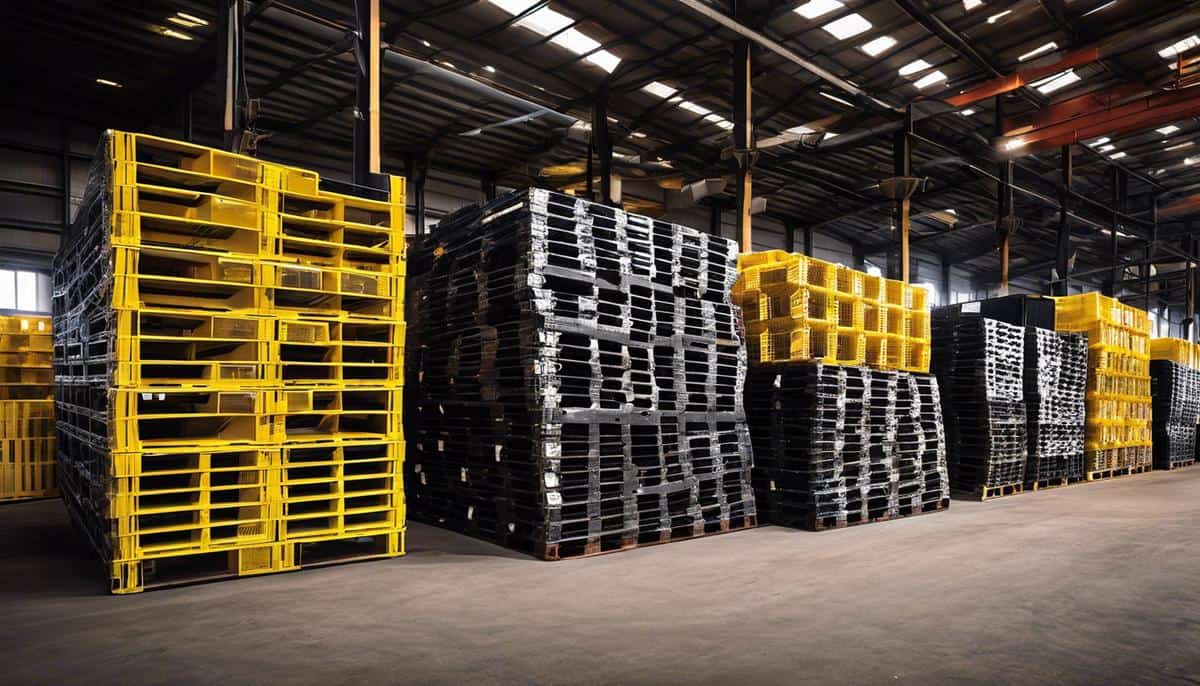
Environmental Impact and Lifecycle Assessment
Lifecycle Assessment of Plastic Pallets: Understanding Environmental Impact through Comprehensive Analysis
The imperative to mitigate the environmental impact of industrial operations and supply chain logistics necessitates an in-depth comprehension of plastic pallets’ lifecycle assessment (LCA). An LCA offers a holistic view of the environmental burdens associated with the production, use, and end-of-life management of plastic pallets. By systematically evaluating inputs, outputs, and potential environmental impacts, LCA shapes our understanding of these ubiquitous implements of commerce.
Lifecycle assessment methodology quantitively appraises the cumulative environmental effects linked to plastic pallets. This includes the embodied energy and resources from raw material extraction, energy consumption in manufacturing processes, emission of greenhouse gases during pallet use—owing to transportation—and impacts from end-of-life treatments. The application of LCA in plastic pallets further extends to compare the environmental footprint with alternative materials, such as wood or metal, providing a basis for informed decision-making.
At the end-of-life stage, the assessment scrutinizes disposal methods—landfill, incineration, or recycling. This focus spotlights LCA as a decisive factor in advocating for a circular economy approach, accentuating the benefits of recycling, which curtails the depletion of virgin materials and reduces landfill utilization. Moreover, LCA can reveal opportunities for energy recovery from non-recyclable plastic pallet components, although this requires a balanced consideration of energy gains against potential emissions.
Incorporating sensitivity analysis within LCA frameworks can elucidate the robustness of results amid varying scenarios, such as the adoption of renewable energy sources in the production phase or improvements in logistics that reduce emissions during the use phase. A comprehensive LCA thus provides stakeholders with a powerful tool to evaluate the environmental aspects of plastic pallets throughout their lifecycle.
The ongoing evolution of lifecycle methodologies, situating them within the broader context of sustainability assessments, further emphasizes the relevance of social and economic dimensions, including labor practices and impacts on local economies. This expanded LCA purview incorporates the broader sustainability goals set forth by the United Nations’ Sustainable Development Goals.
Moreover, the interpretation of LCA results must consider regional variability, reflecting the geographic differences in energy mixes, recycling capabilities, and environmental regulations. Such geographically sensitive analyses are pivotal for multi-national entities aiming to optimize the environmental performance of plastic pallets locally and globally.
The culmination of an LCA study typically results in pragmatic strategies for mitigating environmental effects. Recommendations may center around improving material selection—such as prioritizing high-density polyethylene (HDPE) for its recyclability, enhancing product design for disassembly and recycling, or employing innovative logistics approaches to minimize transportation emissions.
Ultimately, LCA is not a static exercise but an evolving practice that must adapt to technological advances, shifts in market dynamics, and regulatory changes. It offers a scientific basis for continuous improvement in the environmental impact of plastic pallets, forging a path toward sustainability in supply chain operations. Through the execution of comprehensive lifecycle assessments, the field can weather the ongoing and emergent environmental challenges of contemporary industry practices, adhering to the call for responsible stewardship of the planet’s resources.
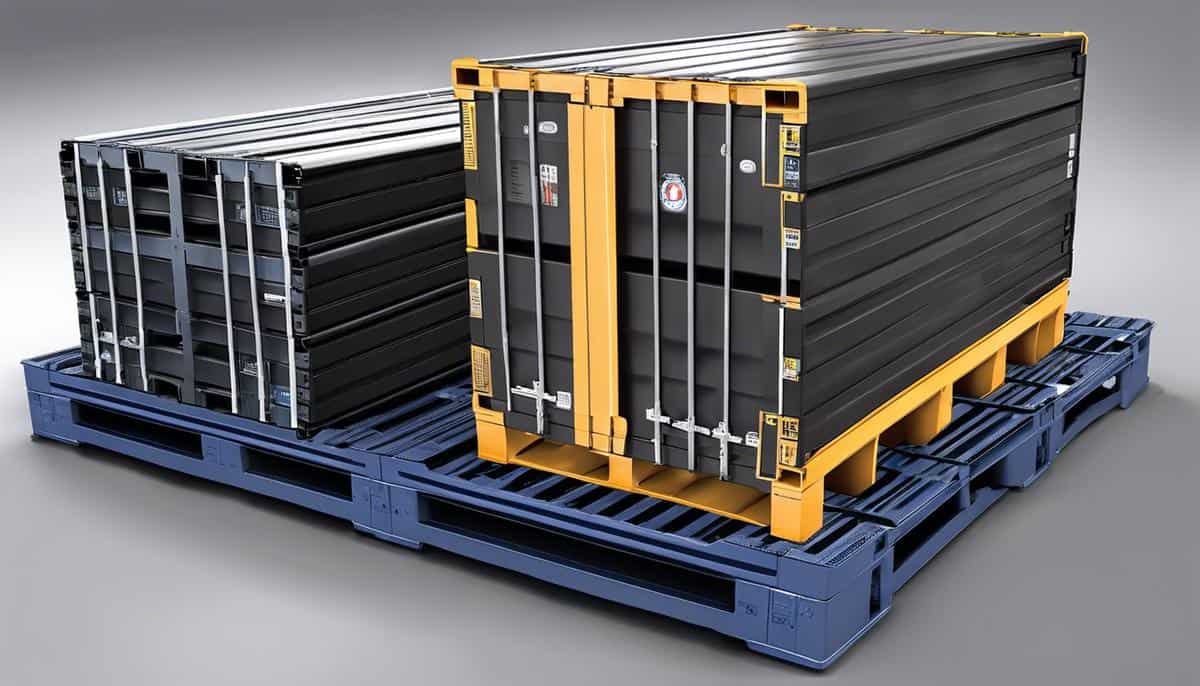
Innovative Recycling Methods for Plastic Pallets
The contemporary scientific quest to augment the recycling efficacy of plastic pallets has brought to the forefront an exploration of innovative methods that reflect a forward-looking vision. Ensuring a seamless transition from usage to recyclability involves an interdisciplinary approach that harnesses the strengths of materials science, industrial processes, and environmental policy.
One salient vector in the advancement of plastic pallet recycling is the utilization of advanced robotics and automation. Emerging technologies, such as artificial intelligence (AI) and machine learning algorithms, are beginning to be harnessed to improve the efficiency and accuracy of sorting plastic materials. Robots equipped with AI can be trained to identify and sort different types of plastics rapidly, including the precise sorting needed for plastic pallets. This circumvents the current limitations of human labor, which can be costly and less reliable, and creates opportunities for non-destructive disassembly that preserves material integrity.
Moreover, the development of solvent-based purification processes grants a pivotal role. These processes involve dissolving the polymers at controlled temperatures, then filtering out impurities and extraneous substances. The resolidified polymer retains a higher purity level, thus improving the quality of the recycled plastic. This innovation has shown promise in effectively removing stubborn contaminants that would otherwise degrade the recycling stream.
Another frontier is in the innovation of additive degradation technologies, which specifically target the chemical bonds in polymers, allowing for a breakdown of plastics into their constituent monomers. These can then be re-polymerized into new plastics, potentially including the creation of new plastic pallets, thus closing the loop in a circular economy model. This method underlines the influence of cutting-edge chemistry in the journey toward closed-loop recycling.
A burgeoning area of research also focuses on bio-based and biodegradable alternatives for plastic pallets. Should these materials be adopted on a wider scale, they offer end-of-life options that contribute to a regenerative natural cycle, albeit with particular attention to their performance during the usable life of the pallet.
Lastly, the refinement of existing products and the inception of new ones occur within the framework of Extended Producer Responsibility (EPR). This regulatory concept mandates manufacturers to take charge of the entire lifecycle of their products, including end-of-life management. EPR drives innovation by incentivizing companies to design pallets that are easier to recycle and to establish systems for recapturing used pallets.
The research community and industrial stakeholders have only begun to scratch the surface of optimizing the recyclability of plastic pallets. The incorporation of novel methods and technologies mentioned here heralds a future where the environmental impact of plastic pallets is significantly reduced. The consequent augmentation of their recycling processes adheres to the principles of circular economy and sustainability, yielding invaluable dividends for the planet. This endeavor engages not only the scientific acumen but also the collaborative spirit of all who bear responsibility for the material legacy we impart to successive generations.

As we navigate the intricate pipeline of recycling plastic pallets, it’s evident that the journey is as complex as the materials that pave its path. The melding of innovation with keen insight into the lifecycle and environmental impact has surfaced as a beacon of hope for this recycling niche. The advancements in technology and inventive methodologies discussed here not only chart a course for a more efficacious recycling paradigm but also exemplify a vibrant synergy between economic viability and environmental stewardship. Indeed, as we press forward, it is the harnessing of such synergies that promises to redefine the horizons of plastic pallet recycling, nudging us closer to a future where sustainability is not just an ideal, but a tangible reality.

